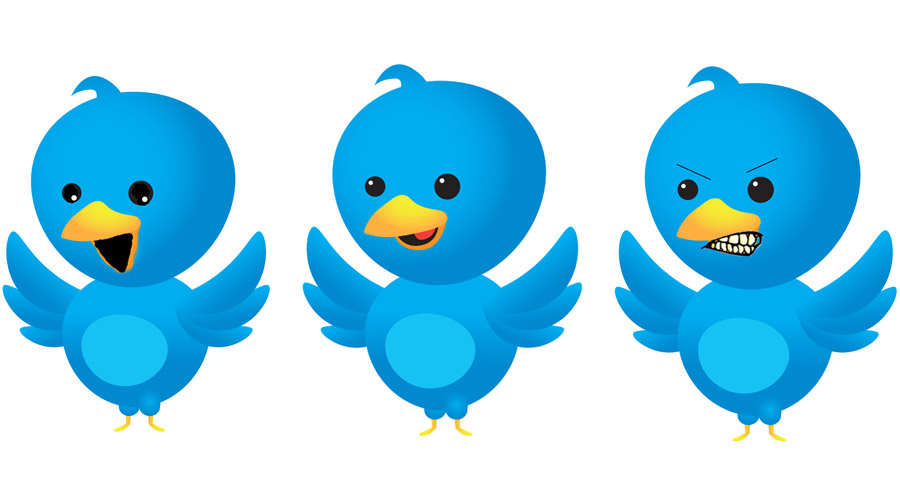Twitter Data Shows Trends in User Moods Across the Globe
November 16, 2011

When Twitter first hit the social media market, its functionality was doubted and frequently mocked. In 140 or fewer characters, how could this sparsely designed platform hold a candle to more established forums, like Facebook or even the once-popular Myspace? Critics attacked the futility of a medium which seemed to accomplish such a menial task, or worse, warned of an impending Orwellian future. Twitter, with its suggested topics and hashtags to categorize tweets, might pave the way to the devolution of spoken language into Newspeak, the intentionally limited vernacular introduced in 1984, where it became impossible to criticize authority.
In fact, Twitter seems to have flourished inside the box. The challenge of a seemingly measly character limit has led to a surge of user creativity. What’s more, the once-humble startup has become a vital instrument of global consciousness. In the last year, Twitter became the voice of the oppressed during not one, but three revolutions, first in Tunisia, then Egypt, then Libya. As people joined together to overthrow tyrannical governments, local protests became national and global as public awareness grew through social media.
Twitter’s prowess has not gone unnoticed. A growing number of researchers have found success in using Twitter to measure and anticipate public mood about everything from which movies will do well at the box office to the fluctuations of the stock market. For instance, a study published in Science magazine on Sept. 30 of this year, found, not surprisingly, that people all over the world wake up in a good mood, but that good cheer evaporates throughout the work day, and returns in the evening.
Many at Fordham College Lincoln Center (FCLC) found it easy to agree that they generally started their days in a good mood, even if they faced a daunting schedule. “My mood in the morning usually depends on what I have ahead for the day. I usually try to be as optimistic as possible regardless,” Jessica Polins, FCLC ’14 said. “If I’m in a bad mood I use it to vent. Things I wouldn’t say on Facebook, I’d usually say on Twitter.” While Facebook is often home to friends and family members who might take offense to a bad mood, Twitter offers a certain protective obscurity in a user handle. A few chosen words can reach anywhere from select followers to the entire user network.
Nina Borovieba, FCLC ’15 agreed that she wakes up in a good mood, regardless of the rest of the day. Her Twitter activity is mostly reserved for good thoughts. “I find it easier to use when I’m in a good mood. When I’m in a bad mood, I just get frustrated with it,” Borovieba said.
The Science magazine study, which followed 2.4 million Twitterers in 84 different countries over two years, also mapped human cyclical moods and emotions, such as enthusiasm, alertness, anger and fear. While the study of emotional rhythms isn’t a new science, Twitter has provided researchers with an unprecedented opportunity to study human emotions globally and in realtime. In the hours following the death of Muammar el-Qaddafi, Twitter traffic out of Libya surged with tweets including “good” and “wonderful.”
In the United States, social scientist Johan Bollen had what he calls a “Eureka moment” when he discovered that emotional data attained from Twitter predicted the activity of the Dow Jones Industrial Average, with 86.7 percent accuracy. Although Bollen hesitates to claim that Twitter activity directly affects the stock market, he and fellow analysts have resolved to strengthen their research in Twitter’s forecasting power by eventually making investments based off Twitter’s mood data.
From celebrities with Twitter clauses in their contracts to first-time users sending a tweet into the vast digital sky, Twitter has empowered the technologically savvy to affect change. Whether writing a simple tweet about being well-rested from sleep, or expressing solidarity for a cause in a faraway land, each thought submitted into the Twitter-sphere is a potential source of insight about human behavior. Information-hungry consumers and researchers alike stand to benefit from this fairly young, but formidable social platform, where human emotions can be studied in their unaltered form.









